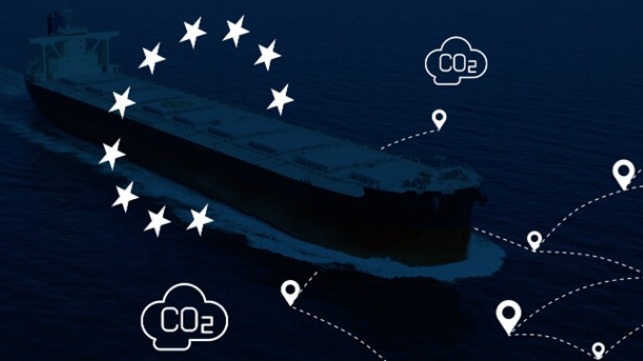How to Make Sure Your Fleet is EU ETS Compliant

Latest regulations imposed on the industry
The impending inclusion of marine emissions in the EU's Emission Trading System (ETS) starting January 2024 means that the industry can hardly catch its breath despite spending much of 2023 scrambling to comply with the IMO's CO2 requirements.
In just over a month from today, all vessels of over 5,000 GRT trading in EU ports will have their CO2 emissions counted towards the overall ETS cap, regardless of the flag they're flying. The system covers 100% of emissions from intra-EU voyages and 50% of emissions loading from or discharging outside of the EU.
What does this mean for shipping?
Shipping companies will consequently have to purchase and surrender EU ETS emissions allowances (or EUA) for each tonne of reported CO2 (or CO2 equivalent) emissions.
For the sake of a smoother transition, the initial phase-in period allows companies to surrender allowances for a portion of their emissions as follows:
• 2025: for 40% of their emissions reported in 2024;
• 2026: for 70% of their emissions reported in 2025;
• 2027 onwards: for 100% of their reported emissions.
The challenges laying immediately ahead for companies operating within the EU ETS consist of monitoring their ships' GHG emissions and submitting Emission Reports as well as Documents of Compliance.
For a shipping company to calculate CO2 costs reliably, it first and foremost has to be able to measure its actual fleet's emissions. The EU ETS throws in the cost of EUA and EUA Futures into the ever-growing package of parameters that need to be observed.
Then there's also the reporting overload that could potentially ensue following the EU ETS imposition on the industry. While some are considering internal restructuring to dedicate resources towards EU ETS compliance, others may opt for external consulting or advisory services.
Then there's also the option of directly providing users the tools needed for compliance with GHG regulations.
What's the solution?
AXSMarine, a pioneer and market leader in the provision of advanced solutions for shipping professionals, has been at the forefront of developing tailor-made tools for monitoring and estimating CO2 and other emissions data ever since the introduction of IMO2020.
The latest addition to their portfolio was specifically designed with EU ETS compliance in mind and provides the data one needs quickly and with minimal user input required.
AXSMarine's solution for the EU ETS challenge for shipping is making their AXSDry platform's Estimator module capable of providing its users with total CO2 emitted, EUA 2024 CO2 cost, and EUA Freight impact per voyage. This new tool is also able to automatically detect each leg of the voyage according to EU ETS definitions and estimate respective emissions depending on whether it's intra- or extra-EU.
AXSMarine has also released an update to its CII & CO2 interactive dashboard tackling EU ETS challenges on a more macro level. On top of estimating CO2 costs and effects on freight rate per year throughout 2026, AXSMarine's solution can also provide its users with EUA price exposure by year of EU ETS implementation for individual vessels or entire fleet segments.
This article is sponsored by AXS Marine. To find out more details about AXSMarine's latest CO2 and CII solutions visit the company online at https://public.axsmarine.com/co2emissions-and-cii
The opinions expressed herein are the author's and not necessarily those of The Maritime Executive.
